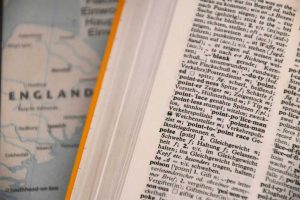Introduction:
In today's digital age, the art of writing formal letters has not lost its significance. Whether it's a job application, a business proposal, or a professional inquiry, sending a well-crafted formal letter can positively impact. But what if you need to address someone without a specific title? This guide will walk you through writing a formal letter to somebody without a title, ensuring your correspondence is respectful, engaging, and effective.
Certified Language Services
At your fingertips are a wide range of professional language services.
Content Services
Technical Writing
Copywriting & Marcom Writing
Web Design & Website Translation
Translatioin and Localization
Software Localization Service
Technical Translation Service
Interpretation Service
Multimedia Translation Service
Transcreation Service
How to Write a Formal Letter to Somebody Without a Title?
Crafting a formal letter to someone without a title requires careful consideration and attention to detail. Here's a step-by-step guide to help you navigate the process:
1. Understand Your Purpose and Audience
Before you start writing, clarify your purpose and identify your target audience. Are you writing a cover letter, a complaint, or a request? Understanding your intent will guide your tone and content.
2. Research the Recipient
While you may not have a specific title, research the recipient's name, gender (if unsure, opt for a gender-neutral salutation), and role within the organization. This information will help you address them appropriately.
3. Choose a Professional Salutation
Opt for a respectful salutation, such as “Dear [Recipient's Name]” or “To Whom It May Concern.” Avoid using overly casual or generic openings.
4. Compose a Strong Opening Paragraph
In the opening, state your purpose concisely. Mention any relevant connections or referrals if applicable. Clearly outline the reason for your letter and establish your credibility.
5. Provide Context and Details
In the subsequent paragraphs, provide context for your letter. Explain the background or reason for writing. Be specific and concise, ensuring the recipient understands the context without unnecessary details.
6. State Your Request or Purpose
Clearly state your request, inquiry, or proposal. Use a polite and confident tone while outlining your expectations. If relevant, explain how the recipient can benefit from your proposal.
7. Offer Supporting Information
If your letter requires supporting documentation, provide clear instructions on where to find them. Reference any attachments or enclosures appropriately.
8. Express Gratitude and Anticipate the Next Steps
Before closing your letter, express gratitude for the recipient's time and consideration. Anticipate the next steps, whether a response, a meeting, or any required action.
9. Choose a Polite Closing
End your letter with a formal closing, such as “Sincerely” or “Best regards.” Sign your name neatly above your typed name.
10. Proofread and Edit
Thoroughly proofread your letter for grammar, spelling, and punctuation errors. Edit for clarity and coherence, ensuring your message is well-structured.
Tips for Writing an Effective Letter:
- Keep the tone professional and respectful throughout the letter.
- Use clear and concise language; avoid jargon or complex vocabulary.
- Maintain a logical flow of ideas to make your letter easy to read.
- Use bullet points or numbered lists to organize information when appropriate.
- Avoid using contractions to maintain a formal tone.
- Review the recipient's guidelines, if any, for specific formatting or content requirements.
FAQs:
How do I address someone without a title in a formal letter?
When addressing someone without a title, research their name and use a respectful salutation like “Dear [Recipient's Name]” or “To Whom It May Concern.”
What if I'm not sure about the recipient's gender?
If unsure, use a gender-neutral salutation like “Dear [Recipient's Name]” to avoid making assumptions.
Can I use a casual tone in a formal letter?
Maintaining a professional tone in formal letters is best to convey respect and credibility.
Should I mention my qualifications in the letter?
Yes, mentioning your qualifications can establish credibility, but keep it relevant to the letter's purpose.
How do I make my letter stand out?
Craft a compelling opening, focus on the recipient's interests, and clearly articulate the benefits of your proposal.
Is it necessary to include supporting documents?
Include supporting documents if they enhance the understanding of your message. Reference them in the letter.
Conclusion:
Writing a formal letter to someone without a title requires attention to detail, respect, and a clear understanding of your purpose. Following these steps and tips can create impactful correspondence that leaves a positive impression. Remember, a well-crafted letter reflects your professionalism and dedication to effective communication.






